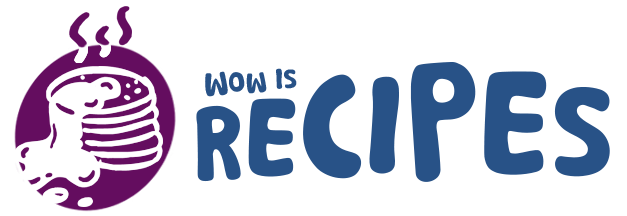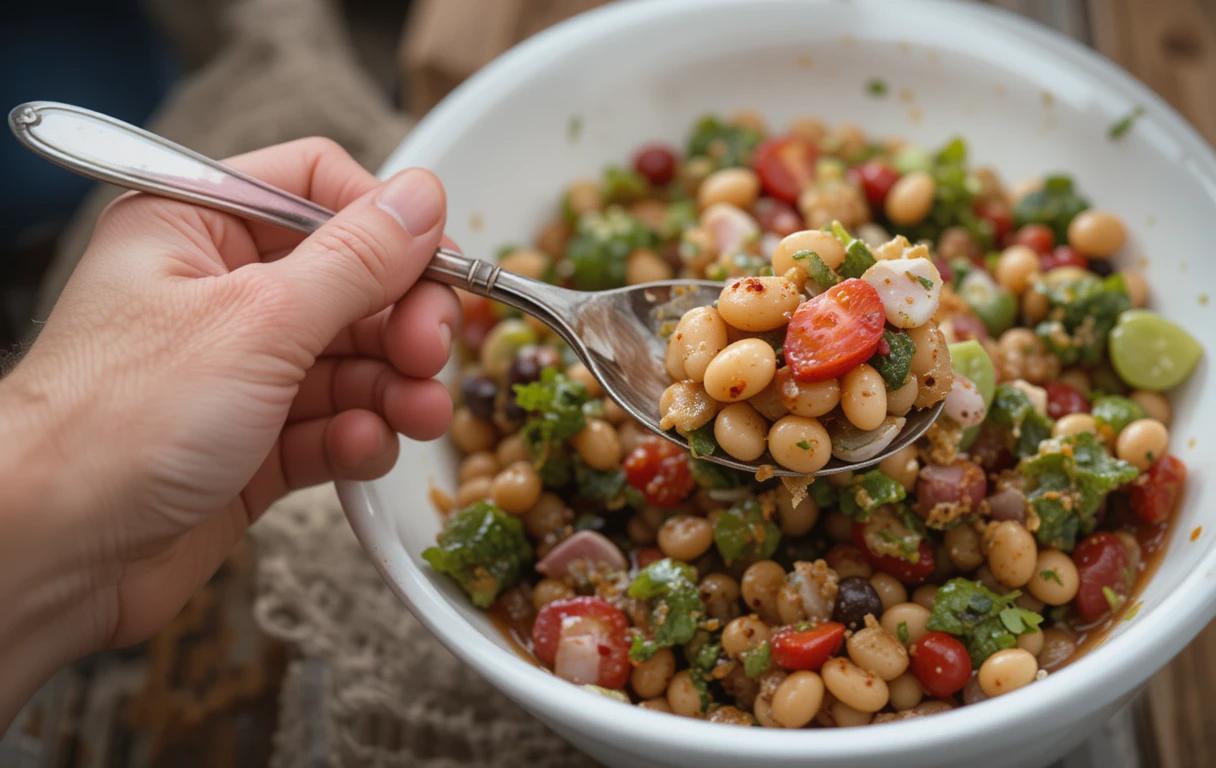Is It Healthy to Eat Bean Salad Every Day?
Bean salad is a popular dish praised for its vibrant flavors, versatility, and impressive nutritional profile. But is it healthy to eat bean salad every day? Packed with protein, fiber, and essential vitamins, bean salad offers a range of health benefits, from supporting digestion to promoting heart health. However, eating it daily may also come with potential risks if not consumed in balance with other food groups.
This article dives into the pros and cons of incorporating bean salad into your daily diet. You’ll discover how it impacts your health, tips to make it more nutritious, and whether it’s a sustainable choice for long-term health. Read on to learn everything you need to know about enjoying bean salad every day!
Nutritional Value of Bean Salad
Why is Bean Salad So Nutritious?
Bean salad is a powerhouse of essential nutrients, making it a staple in many healthy diets. It combines a variety of beans—like black beans, chickpeas, and kidney beans—with fresh vegetables, herbs, and light dressings to create a balanced, nutrient-dense dish. Each ingredient contributes unique health benefits, providing a wide range of vitamins, minerals, and macronutrients your body needs.
Key Ingredients and Their Health Benefits
The main components of a classic bean salad include:
- Beans: High in protein and fiber, beans like black beans, chickpeas, and lentils are great for energy, digestion, and muscle repair. They are also rich in iron, magnesium, and folate, which support overall health.
- Vegetables: Ingredients like tomatoes, cucumbers, and bell peppers add crunch and are packed with vitamins A and C, antioxidants, and hydration.
- Herbs and Spices: Parsley, cilantro, or even mint enhance flavor while providing anti-inflammatory and detoxifying properties.
- Dressing: A drizzle of olive oil and lemon juice supplies healthy fats and vitamin C, helping your body absorb nutrients more effectively.
Protein and Fiber: The Power Combo
Protein and fiber are two of the most important nutrients in a bean salad.
- Protein: Beans are an excellent plant-based source of protein, essential for building and repairing tissues. This makes bean salad an ideal option for vegetarians and vegans.
- Fiber: High fiber content helps regulate digestion, maintain healthy cholesterol levels, and keep you feeling full for longer. Just one serving of bean salad can provide over 30% of your daily fiber requirement!
A Low-Calorie, High-Nutrient Option
One of the best things about bean salad is that it’s low in calories while being incredibly nutrient-dense. A standard serving (around one cup) contains approximately:
- 200-300 calories
- 15-20 grams of protein
- 12-15 grams of fiber
- High levels of potassium, magnesium, and iron.
This makes bean salad a guilt-free, satisfying addition to your daily diet.
Health Benefits of Eating Bean Salad Daily
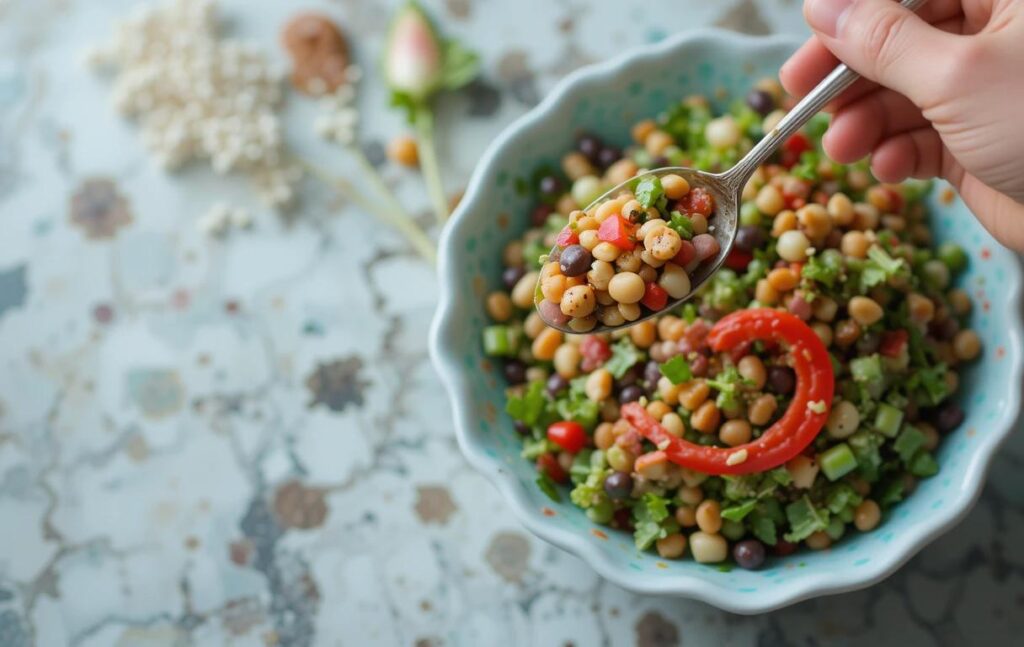
Health Perks of a Bean Salad Diet
Including bean salad in your daily diet comes with a wealth of health benefits. Its nutrient-rich ingredients support various bodily functions, from heart health to blood sugar management. Let’s dive into the specific ways this dish can improve your overall well-being.
Supports Heart Health
The beans and vegetables in a typical bean salad are excellent for maintaining a healthy heart.
- Rich in Soluble Fiber: Soluble fiber helps reduce bad cholesterol (LDL) levels, which lowers the risk of heart disease.
- Low in Saturated Fats: Bean salad typically relies on healthy fats, such as olive oil, which promote cardiovascular health.
- High Potassium Content: Beans like kidney beans and chickpeas are high in potassium, a mineral that helps regulate blood pressure.
Tip: Adding herbs like parsley or dill not only enhances flavor but also provides antioxidants that fight free radicals, reducing inflammation linked to heart disease.
Improves Digestion and Gut Health
Bean salad is packed with dietary fiber, which plays a crucial role in maintaining a healthy digestive system.
- Promotes Regularity: Fiber helps prevent constipation by adding bulk to stool and aiding its smooth passage through the digestive tract.
- Feeds Good Gut Bacteria: Beans act as a prebiotic, fueling the growth of beneficial gut bacteria that improve digestion and immunity.
- Prevents Bloating: Although beans are known to cause bloating for some people, proper preparation (like soaking) and eating them regularly can reduce this effect over time.
Manages Blood Sugar Levels
Bean salad is an excellent food choice for people looking to stabilize their blood sugar levels.
- Low Glycemic Index (GI): Beans release sugar slowly into the bloodstream, preventing spikes and crashes in blood glucose.
- Protein and Fiber Combo: The duo of protein and fiber further aids in stabilizing blood sugar, making bean salad ideal for those with diabetes or insulin resistance.
Boosts Energy Levels
The iron content in beans is vital for red blood cell production, which transports oxygen to your cells. Pairing beans with a vitamin C source, like lemon juice in the dressing, enhances iron absorption, keeping your energy levels high throughout the day.
Aids in Weight Management
Bean salad’s high protein and fiber content make it incredibly filling, reducing the likelihood of overeating.
- Satiety Factor: Consuming fiber-rich meals helps you feel full longer, making it easier to maintain a calorie deficit for weight loss.
- Nutrient-Dense Yet Low-Calorie: Bean salad provides essential nutrients without piling on unnecessary calories.
Potential Risks of Eating Bean Salad Daily
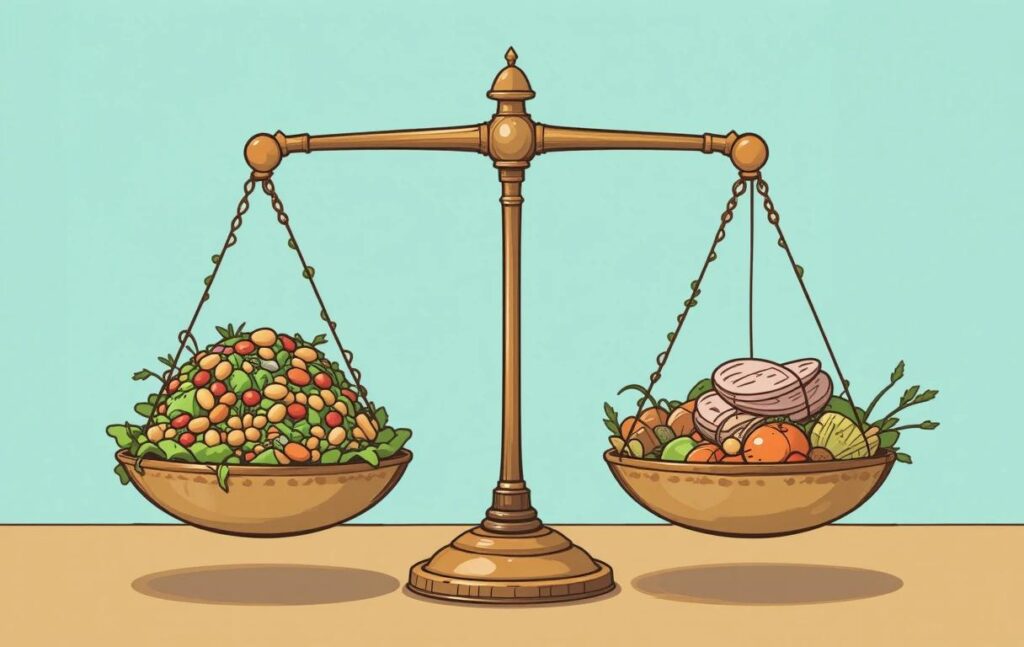
Can You Eat Too Much Bean Salad?
While eating bean salad every day offers impressive health benefits, overconsumption or improper preparation can lead to potential risks. Let’s explore some of the downsides and how to mitigate them.
Bloating and Gas Concerns
Beans are notorious for causing digestive discomfort in some people due to their high content of oligosaccharides—a type of complex sugar that’s difficult to digest.
- Why It Happens: These sugars ferment in the gut, producing gas and leading to bloating or cramps.
- How to Avoid It: Soaking beans overnight, rinsing canned beans thoroughly, or cooking beans with spices like ginger and cumin can reduce this effect.
Pro Tip: Gradually increase your bean intake to allow your digestive system to adjust, minimizing bloating over time.
Potential Nutritional Imbalance
Eating bean salad daily can sometimes lead to an imbalance in your overall diet if it’s not paired with other nutrient-rich foods.
- Too Much Fiber: Excessive fiber intake may hinder nutrient absorption, causing deficiencies over time.
- Lack of Variety: If bean salad becomes your primary meal, you may miss out on key nutrients found in other food groups, such as omega-3 fatty acids from fish or calcium from dairy.
Solution: Complement your bean salad with other meals that include lean proteins, whole grains, healthy fats, and dairy or fortified plant-based options for a balanced diet.
Sodium Content in Store-Bought Varieties
Pre-packaged or store-bought bean salads can contain high levels of sodium, which may negate some of their health benefits.
- Excess Sodium Risks: High sodium intake is linked to elevated blood pressure and increased risk of heart disease.
- How to Fix It: Prepare your bean salad at home to control salt levels and opt for low-sodium canned beans when shopping.
Allergies or Food Sensitivities
Though rare, some individuals may have allergies or sensitivities to legumes such as soybeans or peanuts.
- Symptoms: These can include digestive discomfort, rashes, or respiratory issues.
- Alternatives: If beans cause allergies or sensitivities, you can substitute lentils or try other high-protein options like quinoa or tofu in your salad.
Environmental and Ethical Considerations
Beans are a sustainable food choice, but their packaging and processing methods can vary. Canned beans, for example, sometimes come in BPA-lined containers.
- Solution: Look for BPA-free cans or buy dried beans to cook yourself for a more sustainable option.
Striking the Right Balance
To enjoy the benefits of bean salad without overloading on its potential downsides:
- Limit your portion to 1-2 cups daily.
- Rotate ingredients in your salad to ensure diversity.
- Use homemade dressings to reduce added sugars and unhealthy fats.
How to Make Bean Salad Healthier
Customizing Bean Salad for Maximum Health
While bean salad is inherently nutritious, there are several ways to enhance its health benefits. By tweaking ingredients and experimenting with preparation methods, you can create a balanced, delicious, and nutrient-dense dish tailored to your needs.
The Role of Dressings: Avoiding Excessive Calories
Dressings can significantly impact the calorie content and nutritional value of a bean salad.
- Avoid Creamy Dressings: Store-bought creamy dressings can be high in saturated fats and added sugars.
- Opt for Simple, Healthy Dressings: Use olive oil, lemon juice, balsamic vinegar, or apple cider vinegar for a light, flavorful, and nutrient-rich alternative.
- Spice It Up: Add fresh garlic, cumin, chili flakes, or smoked paprika for flavor without extra calories.
Recipe Tip: A simple dressing made of 2 tablespoons olive oil, 1 tablespoon lemon juice, and a pinch of salt is heart-healthy and enhances nutrient absorption.
Adding Diverse Vegetables and Herbs
Vegetables and herbs not only enhance the flavor but also provide additional nutrients and antioxidants.
- Colorful Vegetables: Include red bell peppers, cucumbers, cherry tomatoes, shredded carrots, or even steamed broccoli to boost vitamin and mineral content.
- Fresh Herbs: Parsley, cilantro, basil, or dill bring anti-inflammatory properties and fresh aromas to the dish.
- Seasonal Additions: Rotate seasonal vegetables to keep your salad interesting and cost-effective.
Incorporating Healthy Fats
Adding healthy fats can turn your bean salad into a more balanced meal.
- Avocado: A few slices of avocado provide monounsaturated fats that support heart health.
- Nuts and Seeds: Sprinkle chia seeds, flaxseeds, or slivered almonds for added crunch, omega-3s, and protein.
- Cheese Alternatives: If your diet allows, feta or goat cheese adds calcium and tangy flavor in moderation.
Pro Tip: Keep portion sizes of fats small to avoid making the salad overly calorie-dense.
Boosting Protein Content
Although beans are a fantastic source of plant protein, adding complementary protein sources can create a more complete meal.
- Quinoa: Toss in cooked quinoa for a complete protein source and added texture.
- Hard-Boiled Eggs: Slice eggs into your salad for additional protein and vitamins.
- Grilled Chicken or Tofu: For non-vegetarians or vegans, these are great protein-boosting options.
Rotating the Types of Beans
Switching up the beans you use prevents monotony and offers diverse nutrients:
- Black Beans: High in antioxidants.
- Chickpeas: Rich in iron and zinc.
- Edamame: Packed with plant-based protein and omega-3 fatty acids.
- Lentils: Low in calories but rich in folate and fiber.
Keep It Fresh and Homemade
To maximize the health benefits of bean salad:
- Prepare Fresh: Freshly made salads retain more nutrients than store-bought versions.
- Control Ingredients: Homemade recipes help you avoid excess sodium, sugar, and unhealthy fats.
FAQs About Eating Bean Salad Daily
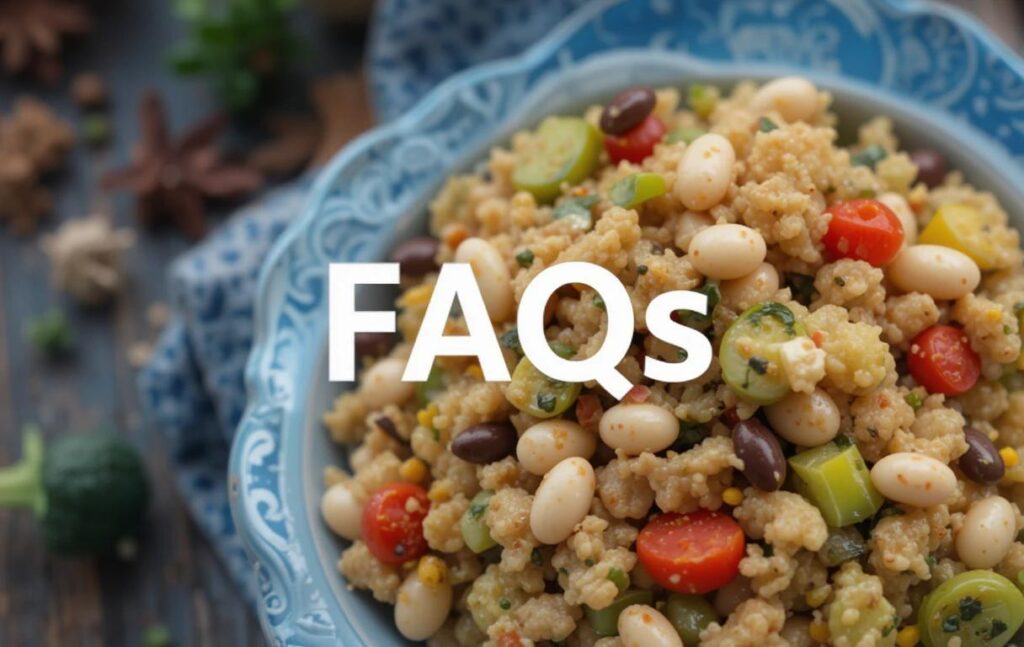
Frequently Asked Questions About Bean Salad
To help you make informed dietary decisions, here are answers to common questions about eating bean salad every day.
Can Bean Salad Replace a Full Meal?
Yes, bean salad can serve as a complete meal if it’s well-balanced. For a single dish to meet your nutritional needs:
- Add a source of healthy fats, like avocado or olive oil.
- Include a variety of vegetables to increase fiber and micronutrient content.
- Pair it with whole grains, like quinoa or brown rice, to provide sustained energy.
However, relying solely on bean salad long-term may lead to nutritional gaps, so it’s best paired with other meals or varied ingredients.
What Happens If You Skip Other Protein Sources?
Beans are an excellent source of plant-based protein, but they are not a “complete protein” on their own. This means they lack some essential amino acids.
- To fill the gap: Combine beans with grains (like quinoa or rice) or nuts to form a complete protein.
- For non-vegans: Incorporate eggs, fish, or dairy for diverse protein options.
Skipping other protein sources over time could impact muscle repair and overall energy levels if your diet lacks balance.
Is Bean Salad Suitable for All Diets?
Bean salad is highly versatile and can be adapted for most dietary preferences:
- Vegetarian/Vegan: It’s naturally plant-based, and its high protein and iron content make it a great option.
- Gluten-Free: Bean salad contains no gluten unless it’s added through processed dressings or grains.
- Low-Carb Diets: Beans are carbohydrate-dense, so they may not fit into strict low-carb or ketogenic diets. For these, focus on low-carb vegetables like spinach or zucchini in your salad.
Can Kids and Older Adults Eat Bean Salad Daily?
Yes, bean salad can be beneficial for all age groups, with a few adjustments:
- For Kids: Ensure beans are thoroughly cooked and mashed if needed to prevent choking hazards. Add mild flavors to suit their palate.
- For Older Adults: The fiber in beans can promote healthy digestion, but it’s essential to monitor for bloating. Soaking beans or using canned, low-sodium options can help.
How Can You Store Bean Salad Safely?
Storing bean salad properly is key to maintaining its freshness and safety:
- Keep it refrigerated in an airtight container and consume within 3-4 days.
- Avoid leaving it at room temperature for extended periods, especially if it contains perishable dressings or ingredients like avocado.
How Do Beans Affect Energy and Fitness?
Bean salad is a fantastic energy-boosting food due to its complex carbohydrates, protein, and iron. For fitness enthusiasts:
- Pre-Workout: Eat bean salad 1-2 hours before exercising to ensure sustained energy.
- Post-Workout: Pair it with a lean protein like grilled chicken or tofu to support muscle recovery.
Conclusion
The Verdict: Is Eating Bean Salad Every Day Healthy?
Eating bean salad every day can be a healthy choice when approached with balance and variety. Its high fiber, protein, and nutrient content support digestion, heart health, and sustained energy. However, it’s important to:
- Pair bean salad with other food groups to avoid nutritional imbalances.
- Monitor portion sizes and sodium levels, especially when using canned or store-bought ingredients.
- Customize your salad with diverse vegetables, healthy fats, and complementary proteins to maximize its health benefits.
By following these guidelines, you can enjoy bean salad daily as part of a wholesome, well-rounded diet that keeps your body nourished and energized.
Related Recipes
- “Tuna Tomato Sauce Pasta Recipe“: A tomato-based recipe showcasing another way to use tomatoes.
- “Baked Chicken Fettuccine Alfredo with Broccoli“: Another comforting dish that can be complemented with tomato-based sauces.
Ingredient-Focused Content
- “Lions Mane Mushroom Recipe“: Suggest using a tomato gravy as a flavorful addition for plant-based dishes.
Cooking Techniques and Enhancements
- “Mango Habanero Salsa“: Explore complementary uses of sauces and gravies for flavor diversity.
Storage and Reuse Tips
- “Sous Vide Recipes“: Recommend tomato gravy as a sauce for sous vide-cooked meats or vegetables.
- “Ocean Spray Cranberry Sauce Recipe“: Guide readers on making and storing sauces, including tomato gravy.
